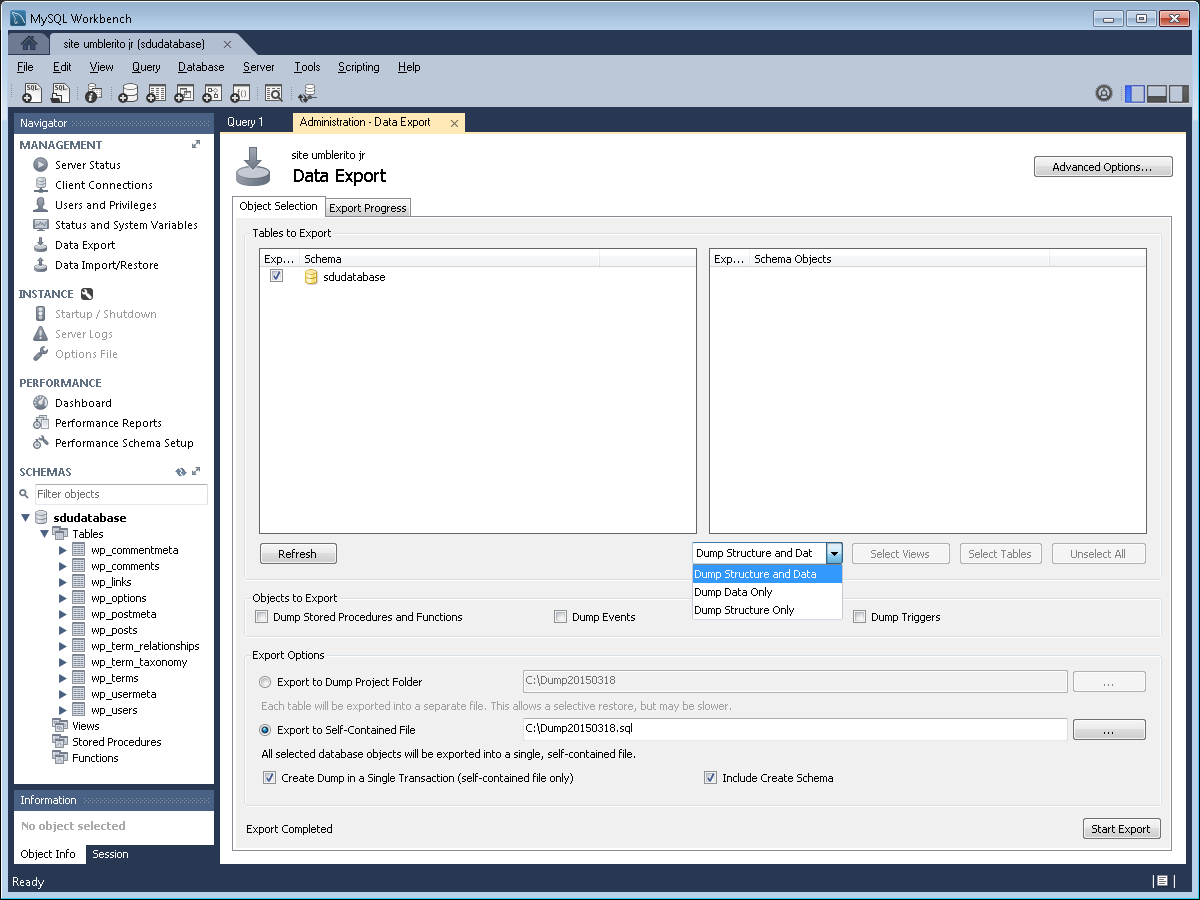
That filename changes daily depending on the date.When this shell script is run it will create a file named something like.Here’s a quick overview of what this shell script does: #mysqldump -opt -protocol=TCP -user=$Īn explanation of my MySQL database backup shell script # use this command for a database server on a separate host: # (3) do the mysql database backup (dump) # (2) in case you run this more than once a day, remove the previous version of the file
#DUMP DATABASE WORKBENCH LICENSE#
# Attribution-ShareAlike 3.0 Unported License # This work is licensed under a Creative Commons An explanation follows the shell script source code.
#DUMP DATABASE WORKBENCH CODE#
Here’s the source code for my MySQL database backup shell script. My MySQL database backup (dump) shell script To that end, I just created a MySQL shell script that I use on my Linux servers to make database backups with mysqldump, and I thought I’d share that script here. I currently have a collection of websites on several different servers (including Linode and GoDaddy, so I was just spending some time trying to automate my MySQL database backups. MySQL database backup FAQ: Can you share a Linux shell script that I can use to make a MySQL or MariaDB backup (i.e., a shell script that wraps the mysqldump command)? Contact me at (al) at valleyprogramming (dot) com for details. Select Import from Self-Contained File and enter the location in the File Path text field.Ĭlick Start Import and enter the database password if prompted. This process may take several minutes depending on the size of your database backup.Want to work together? Your business can now hire me (Alvin Alexander) for small Scala and Flutter side projects. Select which tables from the backup you would like to restore. Select Import from Dump Project Folder and enter the location in the Folder Path text field. This step will differ depending on which option you chose. When you created the backup you were presented with the option to export your database tables to a folder or a single self-contained file. If you cannot see this option, make sure the Home tab is selected. Restore your database from a previous backup Step 1Ĭlick Manage Import / Export under Server Administration on the right of the Workbench window.
#DUMP DATABASE WORKBENCH PASSWORD#

Step 4Įnter your database password when prompted. Default Schema: Enter the name of your database.Ĭlick Next when you have entered the details.Username: The username of your database owner as chosen during your MySQL setup.





 0 kommentar(er)
0 kommentar(er)
